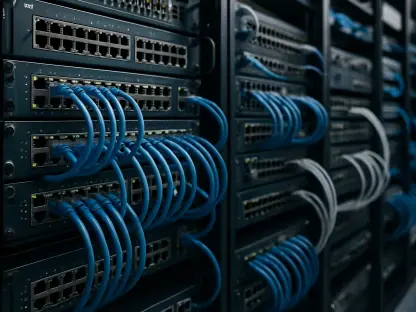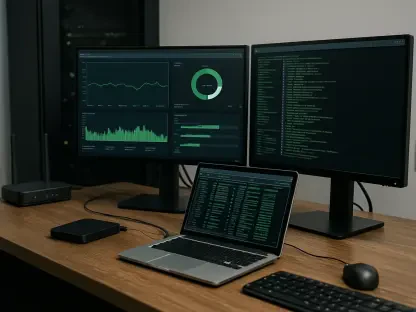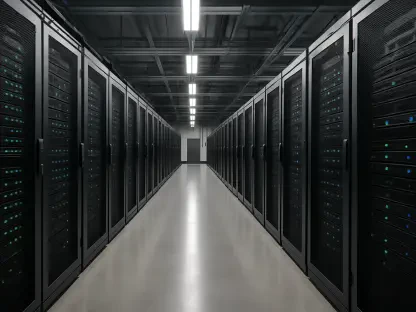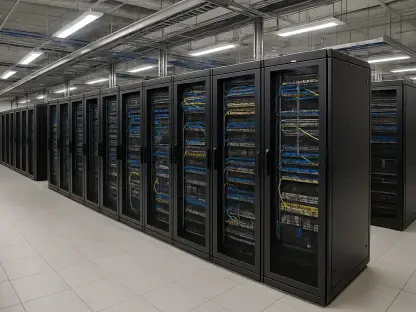The emergence of Decentralized Physical Infrastructure Networks, known as DePIN, marks a pivotal shift in the ongoing evolution of Web3 technologies, distinguishing itself from digital assets like NFTs and DeFi that have long been central topics in this space. This innovative approach heralds a new chapter where blockchain technology intersects with the physical world, aiming to reshape how infrastructure is conceived and utilized. By tokenizing physical assets and incentivizing participation through cryptographic tokens, DePIN aspires to replace traditional centralized infrastructure systems with decentralized networks where individuals can take part in meaningful ways. These networks offer promising solutions in areas such as wireless connectivity, energy production, and supply chain management, reflecting a broader ambition to democratize infrastructure management and access.
How DePIN Functions in Web3 Domains
At its core, DePIN utilizes blockchain-enabled networks to foster decentralized infrastructure solutions by leveraging individuals’ contributions of real-world resources. These resources encompass computing power, energy, sensors, bandwidth, and storage, with contributors rewarded via tokens—creating an incentive-driven ecosystem. The model is a departure from traditional capital-intensive systems, proposing a more cost-effective, distributed model. By harnessing principles like permissionless access and token-based incentives, the DePIN approach advocates for systems that are not only distributed but also resilient and adaptable to changing demands. The ongoing advances in layer-1 blockchains and reliable data oracles ensure that DePIN is both secure and efficient in its operations, cementing its role as a viable alternative to conventional systems.
DePIN’s operating model is defined by users deploying hardware nodes such as routers, sensors, or mining rigs, which provide a variety of services. These include internet access, storage, and computational resources, with contributions validated through proofs like Proof of Coverage. Token rewards are distributed based on the veracity and quality of services provided, transforming participants into micro-operators of infrastructure. This novel approach defies the dominance of traditional Internet Service Providers, cloud service companies, and grid operators, fostering an inclusive model of infrastructure operation. The peer-to-peer nature of these networks aligns with broader Web3 goals of decentralization, offering a sustainable path forward for infrastructure development.
Technological Trends Facilitating DePIN’s Rise
Several important macroeconomic and technological trends have created a fertile environment for the rise of DePIN. The COVID-19 pandemic exposed the fragility of established infrastructure systems, underscoring the need for more resilient and decentralized solutions. In parallel, the global surge in broadband and cloud services has amplified demand for scalable infrastructure. DePIN offers innovative, capital-efficient funding solutions, eliminating the need for substantial upfront investment, which could often be prohibitive. Token incentives drive DePIN’s growth, allowing projects to expand in a financially sustainable way by leveraging community participation and investment.
Prominent protocols like Helium and the Render Network serve as pioneering examples of DePIN’s practical applications. Helium, focused on decentralizing wireless networks, represents a standout case with over 1.1 million hotspots deployed worldwide. This protocol prioritizes network coverage in demand areas, challenging profit-led conventional strategies. Render Network, on the other hand, decentralizes GPU rendering, providing artists and researchers with access to computing power from underutilized GPUs. Such initiatives are vital for Web3 applications in AI, gaming, and the metaverse. Meanwhile, protocols like Filecoin underscore DePIN’s contribution to bridging physical and digital realms through trust-minimized decentralized storage.
Advantages and Potential of DePIN
Compared to traditional infrastructure models, DePIN offers several advantages, including distributed ownership and community-led governance, funded by tokenized projects. These elements reduce entry barriers, enabling wider participation and equitable revenue distribution, while also enhancing system resilience. Examples of DePIN’s potential applications extend beyond connectivity and computing; they include smart grids, decentralized supply chain validation, sensor networks feeding on-chain data, and token-incentivized electric vehicle charging stations. The broad spectrum of use cases showcases DePIN’s potential to disrupt various infrastructure sectors, meeting modern technological demands while adapting to evolving consumer and environmental needs.
DePIN’s decentralized model also addresses challenges relating to hardware standardization, regulatory uncertainty surrounding token rewards, and ensuring the quality and security of services. Physical node exposure brings security risks, necessitating robust designs and mechanisms to protect against vulnerabilities. Tokenomics remain at the forefront, requiring careful balancing to prevent hyperinflation while motivating participation. Advances in AI integration are helping resolve these issues, offering novel solutions to age-old challenges within infrastructure management. As DePIN networks continue to mature, they hold immense potential for transformation and innovation in physical infrastructure.
The Future of DePIN in a Transformative Era
DePIN stands for Decentralized Physical Infrastructure Networks and represents a significant shift in how infrastructure solutions are created and maintained. By utilizing blockchain technology, DePIN revolutionizes the management of infrastructure through the contributions of individuals who offer real-world resources. These resources include computing power, energy, sensors, bandwidth, and storage. Participants are incentivized with tokens, ensuring that this ecosystem thrives on motivation and engagement. Unlike traditional infrastructure systems that are heavily reliant on capital, DePIN proposes a distributed and cost-effective model. It embraces principles such as permissionless access and token incentives, ensuring the system is resilient and can adjust to changing demands. Continuous improvements in layer-1 blockchains and trustworthy data sources guarantee the security and efficiency of DePIN, making it a strong competitor to conventional systems. Participants act as micro-operators by deploying hardware nodes. This concept challenges the control of big entities like Internet Service Providers and cloud service companies and is aligned with the decentralization goals of Web3, paving the way for new infrastructure development.









